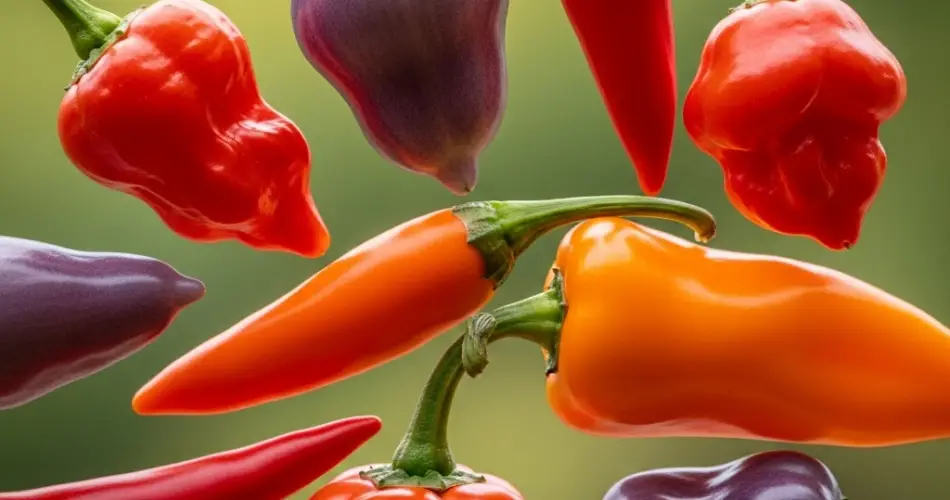Chili plants are a popular addition to home gardens due to their vibrant appearance, diverse heat levels, and culinary versatility. Whether you’re growing mild bell peppers or fiery habaneros, one of the most critical factors for success is giving your chili plants the right soil and proper fertilization. Healthy soil and the correct nutrients ensure strong root development, lush foliage, and a high yield of flavorful fruits. Here’s a complete guide to help you grow robust chili plants by focusing on soil preparation and fertilizing the right way.
Ideal Soil Conditions for Chili Plants
Chili plants grow best in well-draining, fertile soil that retains moisture without becoming waterlogged. Good soil structure ensures that roots can breathe and expand, allowing for better nutrient uptake and overall plant health.
Soil Type and Texture
-
Loamy soil is ideal—light, airy, and rich in organic matter.
-
Avoid compacted or clay-heavy soils, which can lead to poor drainage and root rot.
-
If your garden has heavy soil, improve texture by mixing in sand, compost, or coco coir.
Soil pH
Chilies prefer a slightly acidic to neutral soil pH of 6.0 to 7.0. If the pH is too low (acidic), add garden lime to raise it. If it’s too high (alkaline), incorporate sulfur or peat moss. A basic soil test kit can help determine your soil’s current pH and nutrient levels.
Preparing the Soil for Planting
Good soil preparation is the foundation for healthy chili plants. Start by clearing the area of weeds, rocks, and debris. Then follow these steps:
-
Loosen the soil to a depth of 12 inches to encourage deep root growth.
-
Incorporate organic matter such as well-rotted compost or aged manure. This improves soil fertility, drainage, and microbial life.
-
Add slow-release organic fertilizer or a balanced granular fertilizer (like 10-10-10) to supply essential nutrients before planting.
Let the soil rest for a few days after incorporating amendments to allow everything to settle before transplanting your chili seedlings.
Fertilizer Needs at Different Growth Stages
Chili plants have specific nutrient requirements at each stage of growth. Applying the right type of fertilizer at the right time can make a big difference in plant vigor and fruit production.
1. Early Growth Stage (Seedling to Transplanting)
At this stage, the focus is on building a strong root system and developing healthy leaves.
Best fertilizers:
-
Compost tea or worm castings – gentle and rich in nutrients
-
Fish emulsion – provides a quick boost of nitrogen
-
Seaweed extract – promotes overall plant health and stress resistance
Apply a diluted fertilizer solution once a week to young plants, either as a soil drench or foliar spray.
2. Vegetative Stage (Post-Transplant)
Once the plants are settled into their final growing spot, they will need more nitrogen to support leafy growth.
Best fertilizers:
-
Blood meal or feather meal – slow-release sources of nitrogen
-
Composted chicken manure – provides nitrogen and micronutrients
-
A balanced organic fertilizer like 5-5-5
Apply a side-dressing of fertilizer around each plant every 2–3 weeks. Be sure not to place fertilizer directly against the stem.
3. Flowering and Fruiting Stage
As chili plants begin to flower and set fruit, they require more phosphorus and potassium to encourage blooming, fruit development, and ripening.
Best fertilizers:
-
Bone meal – rich in phosphorus for strong flowering
-
Banana peel compost or wood ash – excellent sources of potassium
-
Kelp meal – provides micronutrients and enhances fruit quality
Switch to a fertilizer with a lower nitrogen ratio and higher phosphorus and potassium, such as a 5-10-10 mix. Apply every two to three weeks during this stage.
Additional Fertilizing Tips
-
Water before fertilizing: This prevents root burn and helps nutrients move through the soil.
-
Mulch after feeding: Apply organic mulch like straw or grass clippings to retain moisture and slowly release nutrients.
-
Use compost regularly: A 1- to 2-inch layer of compost around the base of each plant improves soil structure and adds gentle nutrition.
Common Mistakes to Avoid
-
Over-fertilizing with nitrogen: This leads to bushy plants with few fruits.
-
Neglecting the soil pH: Even the best fertilizers won’t work properly if pH levels are off.
-
Fertilizing dry soil: Always moisten the soil before applying fertilizer to avoid plant stress.
-
Skipping micronutrients: Magnesium, calcium, and other trace elements are vital—consider supplements like Epsom salt or crushed eggshells if deficiencies appear.
Final Thoughts
Chili plants are heavy feeders, but they reward attentive gardeners with vibrant, flavorful fruits. By focusing on healthy, well-balanced soil and applying the right fertilizers at each growth stage, you’ll give your plants everything they need to thrive. Whether you’re growing chilies in the ground, in raised beds, or in pots, a good soil and feeding plan is the key to a productive and spicy harvest.



